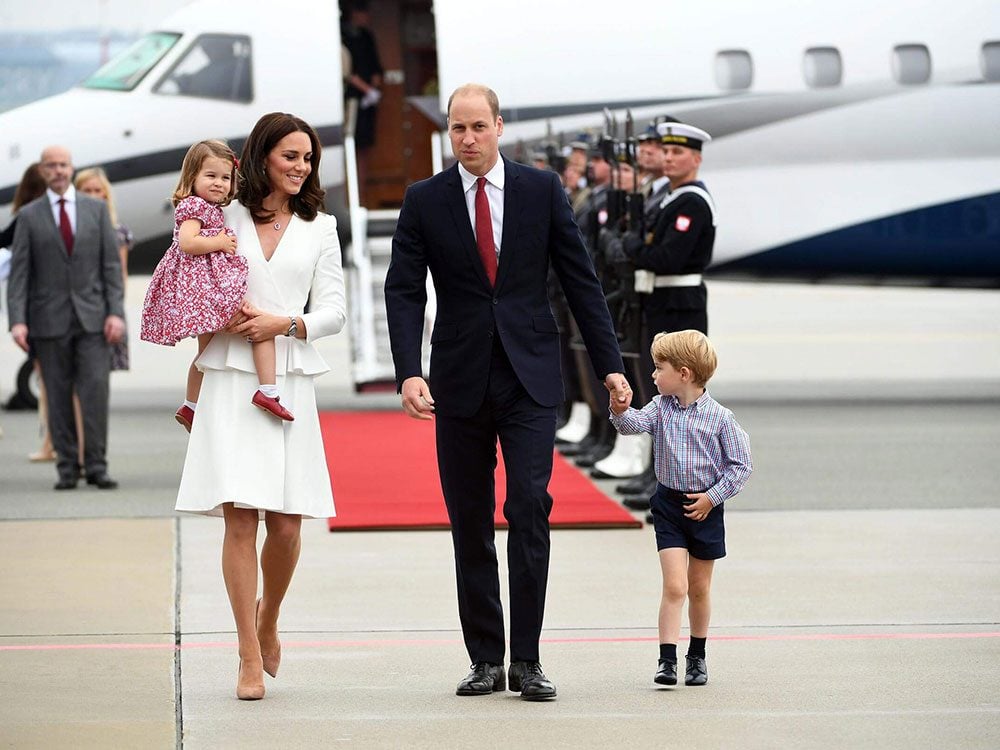
How You Can Travel Like Royalty
Although Meghan Markle will never be called “Princess Meghan” thanks to British monarchy protocol and its intricate technicalities, that won’t stop her from living like a princess once she marries into the family of her intended, Prince Harry. And one thing that goes with living like a princess is travelling like a royal. If you want the royal experience, here’s what it takes:
- Have a huge travel budget: Although the British royal family, like most families, has limitations, they’re minimal: According to Hello Magazine, the royal travel budget was $5.8 million in 2017.
- Expect your destination to pick up your expenses: The countries that royals visit often pay for some of the travel costs.
- Travel by private jet: Sometimes the royals also fly commercial, but pretty much only British Airways. (Here’s what you need to know about Canadian airlines.)
- Travel with a full staff and security entourage: The royals never travel without their full squad of trained professionals, sometimes as many as a dozen deep. (Check out these eight London landmarks frequented by Princess Diana.)
- Stay in the swankiest locales: For their honeymoon, Prince William and Duchess Kate visited The Seychelles (a small republic in the Indian Ocean), and stayed in a villa that costs $7,995 nightly, according to Fodor’s Travel. Duchess Kate’s rumoured favourite Caribbean vacation spot is Mustique, where renting a private home can cost upwards of $30,000 a week.
- Hobnob with A-listers: Think heads of state, rock stars, movie stars, sports stars, etc. Of course, Meghan Markle is already a Hollywood star in her own right, and according to the Daily Mail, Duchess Kate was starstruck at the thought of meeting her.
Unless you have the funds, travelling like a member of the royal family will be tough. You could take small steps, like visiting these hotels for music lovers. It’s totally affordable!
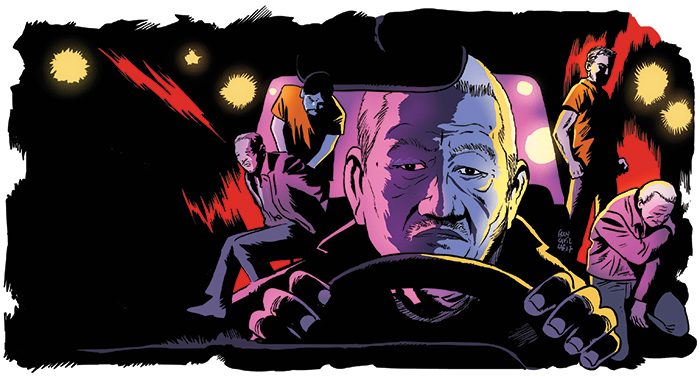
“Take us to Walmart,” said the man who settled into the passenger seat. The driver, Long Ma, 71, recognized from his voice that he was the one who’d called for the cab, telling Ma that he and his friends needed a ride home from a restaurant. His name was Bac Duong. He spoke to Ma in Vietnamese—their shared native language—and wore a salt-and-pepper goatee on his thin and weary face. It was 9:30 on a chilly Friday night in Santa Ana, California. Now they want to go shopping? Ma thought. What happened to going home? Ma, a small man with short gray hair and a gray mustache, had been asleep when Duong called and hadn’t bothered changing out of his pajamas.
In the rearview mirror, Ma could see Duong’s friends, quiet in the back seat: Jonathan Tieu, a pimply 20-year-old, and Hossein Nayeri, an athletic Persian with an air of indifference.
Walmart didn’t have what the men needed, so they told Ma to drive them to a Target 45 minutes away. Ma had no way of knowing that they were desperate for phones, for clothes, and for some semblance of a plan. They finally emerged from Target. “My mom’s place is right around here,” Duong lied.“Take us there, please.”
The streets were dark and quiet, and after a few minutes, Duong motioned to a mangy strip mall. “Pull in here,” he said. As Ma parked his Honda Civic, Tieu handed Duong a pistol, which Duong pointed at Ma. Ma’s mind raced as Nayeri shouted, “Boom, boom, old man!”
The men placed Ma in the back seat, where Tieu now trained the gun on his stomach. Nayeri jumped behind the wheel and set out for a nearby motel.
By the time they arrived, Ma was convinced he was going to die—he just didn’t know how or when. Inside a cramped room, he watched as Nayeri, who he suspected was the group’s ringleader, splayed out on one of the two beds. Ma was ordered to double up with Duong on the other as Tieu slept on the floor near the door, the gun under his pillow. For Ma, there was no escape and, with all the dread he felt, no easy way to fall asleep.
In the morning, Duong turned on the TV. A report about a prison escape was on the news. “Hey,” Duong shouted, “that’s us!” Mug shots filled the screen. A massive manhunt, Ma now learned, was under way for his three roommates.
The jailbreak had occurred a day earlier, on January 22, 2016. It began after Duong, sprawled on a bunk in the open-floor dormitory of the Orange County Jail’s Module F, watched a guard finish his 5 a.m. head count.
Duong then gathered the tools that he’d been hoarding and shuffled to the rear of the housing block, where Nayeri and Tieu waited for him. There, hidden behind a bunk bed, the three used their tools to work loose a metal grate. They bellied through the hole and, surrounded by pipes and wiring, inched along a metal walkway until it dead-ended against a wall. Using the pipes, they shinnied skyward into a ventilation shaft that led to a trapdoor, which they shoved open.
Now on the roof, they fastened a makeshift rope that they’d fashioned from bedsheets and rappelled down four stories to the ground. No alarms sounded; no lights swept the exterior. They’d done it. They were out.
The fugitives allegedly first visited friends, who gave them money. By 9 p.m., the escapees were still in Santa Ana and needed to get away. Duong dialed a cab service that advertised in a local Vietnamese newspaper. Long Ma answered the call.
As the men in the motel hooted and marveled at their images on the TV, Ma was introduced to his captors by their televised rap sheets. The three men were in jail awaiting trial. Tieu had allegedly taken part in a drive-by shooting that left one person dead; Duong had allegedly shot a man in the chest after an argument. And Nayeri, well, he was plenty notorious.
Four years earlier, acting on a hunch that the owner of a marijuana dispensary had buried $1 million in the Mojave Desert, Nayeri had allegedly snatched the guy and his roommate and driven them to the spot where the loot was thought to be hidden. There, Nayeri and his crew were said to have shocked the man with a Taser, burned him with a butane torch, and poured bleach on his wounds, among other abuses, all in a failed attempt to locate the cash.
After the man assured Nayeri there was no buried money, he was left out there to die. (His roommate found help and saved his life.)
Spooked, perhaps, by the prospect that Ma’s disappearance had been noticed, the escapees decided they needed a second vehicle. The next morning, they found a van for sale on Craigslist. Duong took the vehicle for a test spin and then simply drove away. He met up with the others again later, and the fugitives visited a hair salon and altered their appearances, none more than Duong, who shaved his goatee and dyed his hair black.
When they left the salon, Nayeri and Tieu took the van. Duong and Ma got into the Civic, and there, alone in the car, Duong became relaxed and even chatty, asking about the cabbie’s life in their native Vietnamese. At one point, he even called Ma “Uncle,” a term of endearment that implied respect for the old man. But Ma was leery. For all he knew, Duong was playing an angle. As always in the States, Ma found his fellow Vietnamese the hardest people to read.
When Ma had landed in California in 1992, with a wife and four kids, he’d struggled. A former lieutenant colonel in the South Vietnamese Army during the Vietnam War, he still had the physical and emotional scars from seven punishing years spent in a Communist forced-labor camp. The war and his time in the camp had placed him nearly two decades behind the first wave of emigrants who’d left Vietnam for the United States.
For years he took menial jobs. He would later say that his siblings—who had arrived earlier and become dentists and pharmacists and white-collar success stories—made him feel ashamed of the life he had made.
Money had always been tight, which exacerbated the arguments between Ma and his wife. He knew she was losing respect for him and that everyone in the family had noticed it. Rather than suffer the indignity, Ma moved one day, without explanation, from their home in San Diego. He found a little room in a boardinghouse near Santa Ana, 90 minutes north, and began a solitary existence as a taxi driver—a choice that seemed to have led to his current predicament.
Duong steered the Civic toward a new motel, the Flamingo Inn, where they would meet Nayeri and Tieu. Deep into the night, the fugitives laughed and drank and smoked cigarettes, while on television the news anchors said that the reward for information leading to their arrest had increased from $20,000 to $50,000.
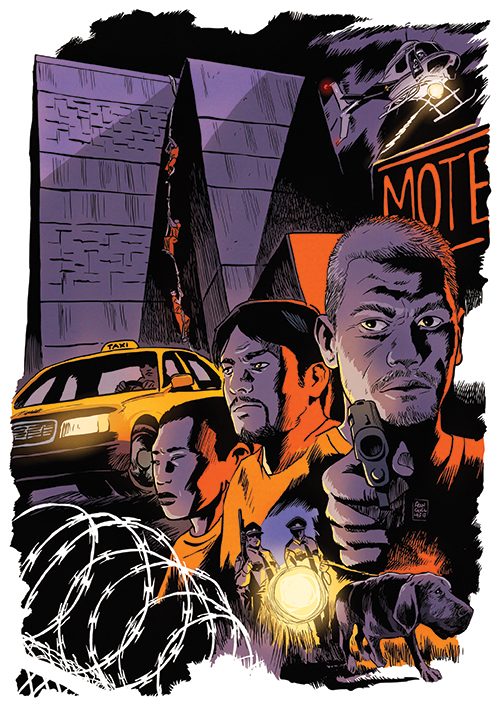
Sunday dawned, and Nayeri seemed more distant than usual. Ma’s captors drank and talked in urgent tones. Nayeri soon began yelling at Duong. The room became loud and tense and small. Ma, with his limited English, sensed that the argument concerned him. He’d begun to consider what the men must have realized themselves: If they killed him now, they could make a cleaner escape. Ma watched as Nayeri pointed in his direction and again shouted, “Boom, boom, old man!”
The escapees decided they needed to move north, and on Tuesday morning—day four of Ma’s captivity—they drove 560 stressful kilometers to a motel in San Jose. The journey exhausted Ma, and that night he snored so loudly that he woke Duong, who was lying beside him. But Duong didn’t elbow him awake. Instead, he slowly climbed out of bed, careful not to stir Ma, and curled up on the floor, so Uncle might rest more peacefully.
The next day, Nayeri announced that he and Tieu needed to take Ma out for a while in the van. By the time they parked near the ocean in Santa Cruz, Ma had figured he’d been driven to the beach to be executed.
His stroll with Nayeri and Tieu began aimlessly—and because of that, it felt even more malevolent to Ma. Nayeri had them pose for pictures. With the ocean, the beach, and the pier as their backdrop, Nayeri acted as if they were friends. What is he doing? Ma thought. And then … nothing. The three got in the van and drove back to the motel.
After watching another news report on themselves, Nayeri and Duong started shouting at each other. Suddenly, Nayeri glanced at Ma and ran his index finger across his throat. In an instant, days of anger and anxiety broke, and Nayeri and Duong fell into a rolling heap. Nayeri ended up on top and landed a series of clean shots to Duong’s nose and jaw, one after another. Satisfied, Nayeri pulled himself out of his rage. Each man gasped for air.
Ma was terrified. But Nayeri did not grab the gun and shoot the cabdriver. He did not haul the old man outside and, in the shadows of the motel, slit his throat. Nayeri simply retreated to a corner. For another night, the four watched one another and, as they went to bed, stewed in the frustration that filled the room.
The news reports were no better the next morning—their seventh day on the run. Law enforcement shared photos of the stolen van the men were driving. This rattled Nayeri and Tieu, who announced to Duong that they were leaving to have the van’s windows tinted and its license plates changed.
When the door closed behind them, Duong turned quickly to Ma. “Uncle, we have to go,” he said in Vietnamese.
The two men drove south in Ma’s Civic, with Duong behind the wheel. When Duong said to him, “Don’t be afraid; you’re not in danger anymore,” Ma snickered to himself. We’ll see, he thought. He had understood enough of the news to piece together Duong’s criminal past: a 1995 burglary conviction in San Diego, four years after he became a U.S. resident; twice pleading guilty to selling cocaine; stints in state prison; and then, in November 2015, the alleged attempted murder of a Santa Ana man after an argument.
And yet, in spite of Duong’s past, there had been, this whole week, another composite on view: that of a flawed but compassionate man. Ma had caught flashes of details but not the full picture of Duong’s conflicted life. He didn’t realize how chronic drug dependency and what Duong’s friends saw as mental disorders had pushed Duong down a criminal path—and he didn’t yet know that Duong was the father of two boys, Peter and Benny.
Duong, his eyes filling with tears, told Ma that he hated how his crimes had placed him outside society. That was the most painful thing—not being accepted. His father wouldn’t speak to him, and his mother said she was ashamed.
A few years earlier, out of prison after serving a drug sentence, Duong had asked his friend Theresa Nguyen and her husband to go with him to his mother’s home—“Because I want her to know that I have normal friends, too,” he told Nguyen. He could never atone in his family’s eyes. Nguyen began to get it, why Duong had been calling her “Sister.” Why he’d phoned her the day her daughter graduated from college, another immigrant success story: “I’m proud of you, Sister.” She was as close to family as he had.
Ma listened, reticent but knowing that sometimes people need to be heard even more than consoled.
Duong told Ma that Nayeri’s plan had been to kill the driver on the beach. But for whatever reason, Nayeri hadn’t gone through with it. The brutal fight the night before had been over Ma too. Duong couldn’t abide seeing the cabdriver murdered for Duong’s mistakes.
Ma said at last, “You should turn yourself in.”
Duong didn’t balk at the suggestion. He was grateful for the way Ma hadn’t judged him. He didn’t want to call Ma “Uncle” anymore, he said. Given the circumstances of the past week, Duong said he wanted to call Ma “Father.”
The suggestion moved Ma, who understood the cultural obligation that came with the moniker: To call Duong “Son.” To trust him, to love him, even. This scared Ma. Life had taught him to be cautious around love. And yet when he looked at the damaged man next to him, his face bruised from the fight with Nayeri, his psyche scarred, he saw the good that the rest of the world failed to see. It warmed him.
“Yes,” Ma said. “You can call me ‘Father,’ and I will call you ‘Son.’”
After hours on the road, they pulled up to an auto-repair shop in Santa Ana. As instructed, Ma slunk inside the garage while Duong sat in the car. In a moment, the old man returned with a woman, who put her head inside the vehicle. Duong started to cry. “Sister,” he said to Nguyen, “I’m tired.”
The day after -Duong turned himself in, Tieu and Nayeri were captured in San Francisco after police were alerted to their van parked on a city street. Ma returned to his boardinghouse. No one had even reported him missing.
Though Duong is back in jail now, Ma has stayed in touch. And while money is scarce for the cabdriver, he has put cash in Duong’s jail account. Ma has even visited the man who kidnapped him. The last time he went, Ma watched through a glass partition as Duong, in an orange jumpsuit, bowed when they met. “Daddy Long!” Duong said, greeting his friend.
Throughout their half-hour visit, the two men wept softly and spoke in their native language of the bond they had nurtured since their week on the run. They both felt so grateful, so surprised by the possibility of friendship. Perhaps Ma especially. Whatever he had expected to experience on that dark, cold night when he left his house in his pajamas, it wasn’t this. Wherever he’d figured that trip might lead, it wasn’t here.
As Ma grinned through the glass of the visitors’ room wall, he realized that Duong had saved his life, even redeemed his soul.
“My son,” Ma said to Duong, “as long as you are still here, I will rescue you like you rescued me.”
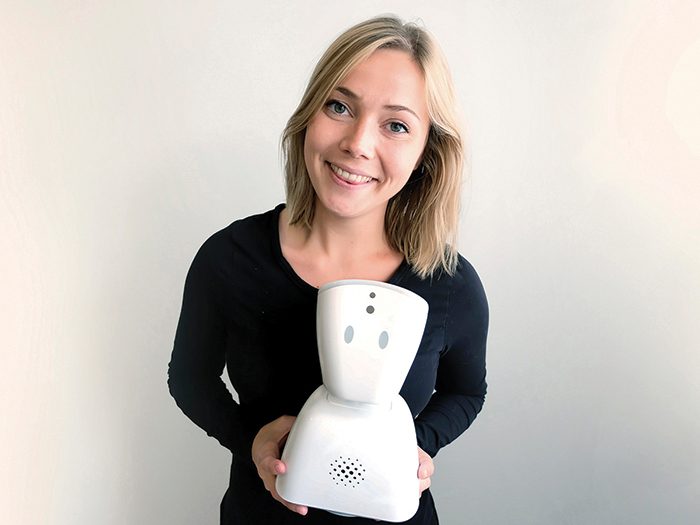
Tackling Isolation
Robots When children suffer from a long-term illness, they miss their school friends. And not just during lessons, but in the breaks too.
A Norwegian startup called No Isolation has come up with a way to reduce loneliness and social isolation. “We can make a difference. We know we can,” says 26-year-old co-founder and CEO Karen Dolva.
She and her team developed a small white avatar called AV1, which sits on a child’s desk while they’re away from school. Back at home, or from hospital, the child can connect with their class to see and hear the teacher and look around the classroom, using simple controls on a laptop. They can ask the teacher questions and even whisper to fellow classmates.
Across Europe, hundreds of thousands of children are off school for at least two months a year, so the potential for the AV1, already in use in Scandinavia, the Netherlands and the United Kingdom, is huge.
Karen Dolva is now looking at ways to alleviate loneliness for senior citizens. The ultimate goal is to end social isolation completely.
Help for Overwhelmed Venice
Tourism On any given day, there are likely to be more tourists than residents in Venice. Frustrated locals have staged frequent protests at the impact this has had on their lives.
Mayor Luigi Brugnaro has already introduced measures to stem the tide, including the promotion of less well-known corners of the city, a ban on new tourist accommodation and a “locals first” policy on water buses.
But even more dramatic is the plan to ban large cruise ships from sailing into the lagoon past St. Mark’s Square, which pollutes the water and damages its historic waterfront.
Italy’s transport minister has announced that within the next four years, ships weighing more than 55,000 tonnes will have to moor northwest of the city. Mayor Brugnaro has hailed the decision, saying, “We have a solution.”
Striking Gold
Luck In 2012, two employees of the commune of Klingnau in Switzerland were mowing a meadow when they discovered 86,000 euros worth of gold ingots stashed in a bag hidden in bushes.
After five years, Swiss law operates a “finders keepers” rule, and since no one has successfully laid claim to the ingots, they are now the official property of the commune. The lucky pair who found them have the right to 10 percent of their value.
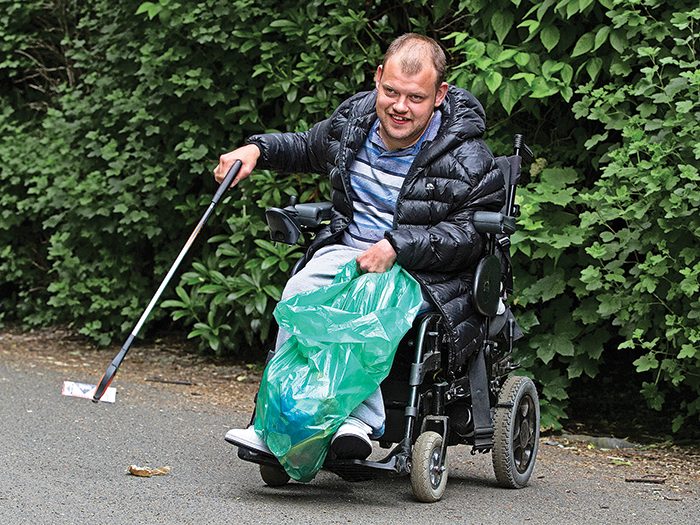
Glasgow’s Dedicated Litter-picker
Heroes Eddie Kirkwood has cerebral palsy. He’s confined to a wheelchair, but doesn’t let that restrict him. As he puts it: “Desire, commitment, hard work. That’s all you need in life.”
These are the qualities Eddie (below) demonstrates all day, seven days a week as he picks up litter around his home town of Glasgow in Scotland. He does it come rain or shine, and without being paid for his work.
“People say I’m doing a great thing, but I don’t see it that way,” he says. “I just want to do my bit so everyone can enjoy clean streets.” Eddie has also raised thousands of pounds for the city’s powerchair football club, which he helped to found.
But he doesn’t want thanks. “I’m just a normal guy doing everything I can to make Glasgow a bit better,” he says.
Sources: Robots—The Guardian, 13.7.17. Tourism—The Local (Italy), 8.11.17. Luck—The Local (Switzerland), 17.10.17. Heroes—ITV News, 24.11.17
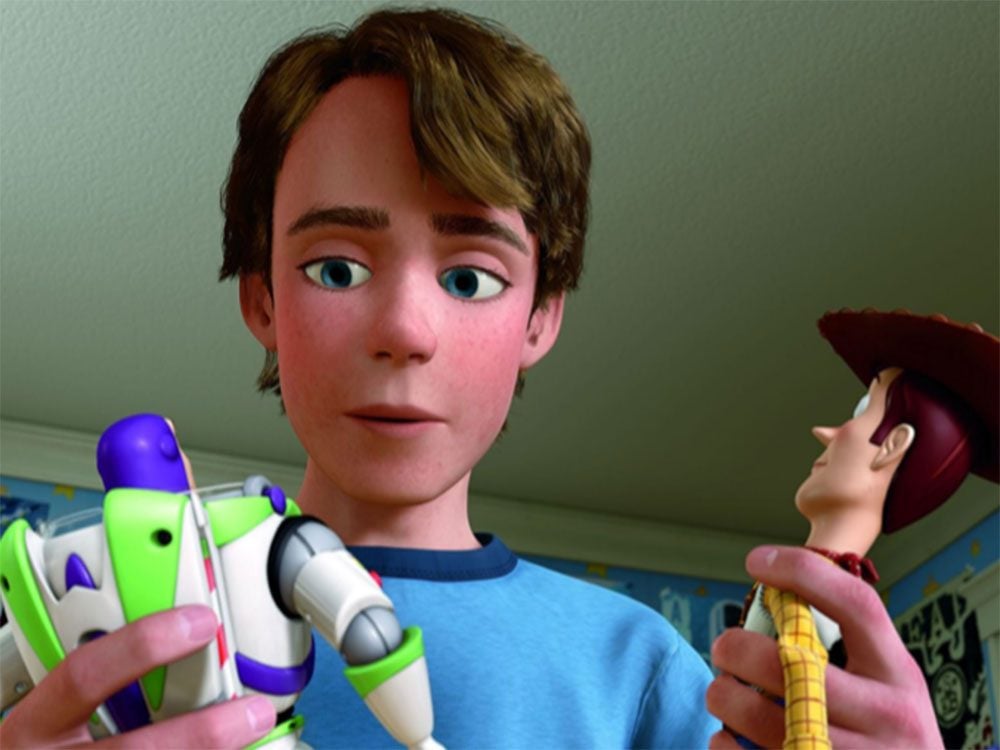
What Really Happened to Andy’s Dad in Toy Story?
We’re about two years away from the June 2019 release of Toy Story 4. And while details about the next installment are pretty scarce, this theory that’s just emerged about the Toy Story franchise might be enough to hold fans over. (Here are three things that are banned from Disney movies.)
If you, or your kids, grew up watching the first three Toy Story films (released in 1995, 1999, and 2010), you may have noticed that Andy’s father is nowhere to be found throughout any of them. And while Disney movies do have a tendency to eliminate one or both of a main character’s parents, often in childhood-marring scenes (hi, Lion King), the fate of Andy’s dad is never addressed at all. Did he die? Are Andy’s parents divorced? It’ll just have to be a mystery…right?
Maybe not! A video by the Super Carlin Brothers on YouTube has suggested a theory—and it actually makes a lot of sense. Buckle up and get ready to have some nagging Toy Story questions answered.
Toy Story’s protagonist, Woody, belonged to Andy’s father first (indeed, Andy’s mom calls Woody “an old family toy”). Andy’s father was also named Andy—Andy Sr.—and he wrote his name on Woody’s boot. The reason Woody is such a rare toy is because he’s the only Woody doll that was ever made—just a prototype. A cereal company had a promotion—send in X amount of box tops and get a Sheriff Woody doll. However, Woody merchandise was discontinued after Sputnik went up (remember Stinky Pete’s complaint that “children only wanted to play with space toys”?). Because Andy Sr.’s family wasn’t very wealthy, he couldn’t collect enough box tops before the promotion ended. But Andy Sr., a sickly child, sent in his few box tops with a letter begging for a Woody doll, and someone decided to send him the prototype.
Here’s where it gets really sad. Andy Sr., already sickly, came down with polio, which meant that all of his belongings had to be burned—including toys. But, he stashed Woody away before he could be burned. Eventually recovering from polio, he met his wife as an adult and had Andy Jr. BUT, around the time Andy’s sister was born, he came down with post-polio syndrome, which he ended up dying from—but not before he entrusted his precious Woody doll to his son. (Be right back, we’re drying our tears.)
See the full video above for a much more detailed description, including a couple more lingering plot holes that the theory clears up. As mind-blowing as the theories are, many are claiming that this story is not the real deal—including, rather disappointingly, one of Toy Story’s original writers, Andrew Stanton. In a tweet, he insisted that there’s “nothing to see here” and that the story is nothing but “fake news.”
Complete and utter fake news. Everyone go back to your homes. Nothing to see here, folks. #Iwasthere https://t.co/06j37YKKt2
— andrew stanton (@andrewstanton) June 24, 2017
That’s it?! You’re just going to tell us that this theory’s not true, without giving us the true story? C’mon. Will we ever learn the true answer? Will it be revealed in Toy Story 4? Alas, we’ll just have to wait and see.
These are the biggest box office hits of each year—from 1933 to now!
Source: mentalfloss.com

Why You Should Be Doing Yoga for Back Pain
Quit popping pills—and start popping poses.
Yep, you read that right! According to a new study published in the Annals of Internal Medicine, yoga can do more than help you beat that afternoon slump. Research says it could finally solve your chronic lower back pain, too.
The one-year study tracked 320 racially diverse, mostly low-income participants in the Boston area with chronic lower back pain. Participants were divided into three groups: those who took yoga classes, those who attended physical therapy (PT) sessions, and those who received an educational book and newsletters. (Here are 10 surprising things that could happen when you start doing yoga.)
As the results rolled in, researchers found that yoga for back pain is just as effective as physical therapy. Plus, not only were participants in yoga or PT sessions less likely to use pain meds when compared to the education group, but they also reported similar levels of satisfaction and quality of life.
“PT is the most common referral that physicians make for patients with back pain. It’s accepted, it’s reimbursed, and it’s offered in most hospitals,” study author Rob Saper, director of integrative medicine at Boston Medical Center, told NPR. However, thanks to this research, “maybe yoga should be considered as a potential therapy that can be more widely disseminated and covered [by insurance].”
And if you need another excuse to start rolling out your yoga mat, here’s one more: The American College of Physicians agrees! They recommend that people with back pain avoid pain medication and opt for more natural alternatives such as tai chi, yoga, or massages.
But hold up—you might not want to cancel your PT sessions (or toss your ibuprofen!) quite yet.
“Any single treatment approach is unlikely to prove helpful to all or even most patients,” said Stefan Kertesz of the University of Alabama at Birmingham School of Medicine and his co-author, Douglas Chang of University of California, San Diego. Still, they say this new study has shown that “yoga offers some persons tangible benefit without much risk.”
These six yoga moves will get you in shape fast!
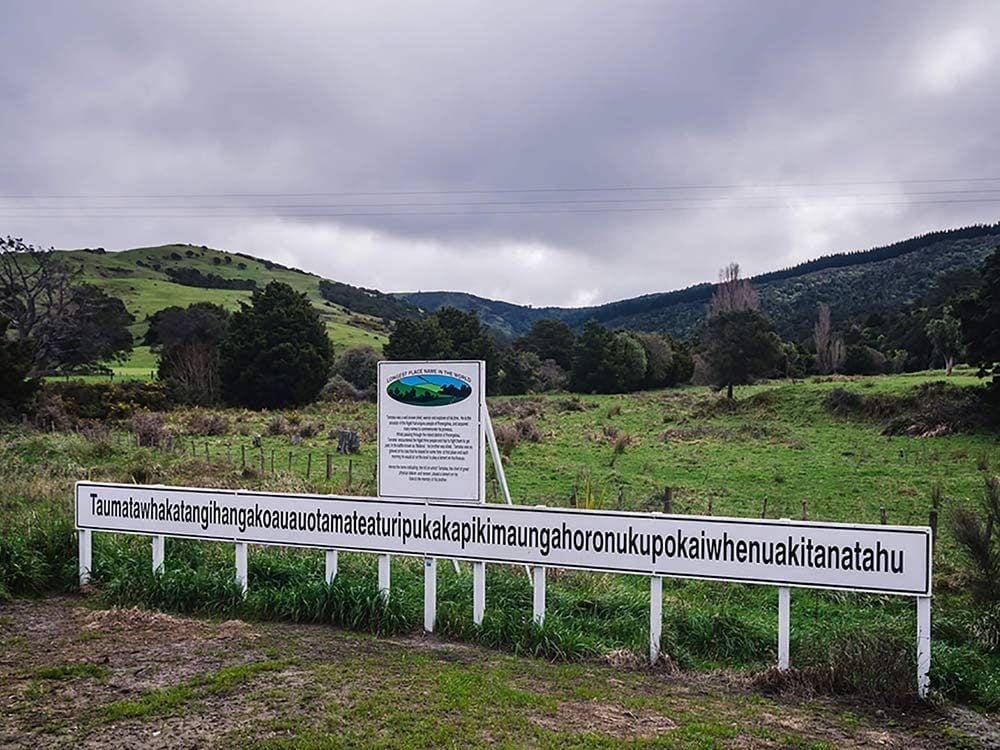
Can You Pronounce the World’s Longest Place Name?
Every world traveller knows the struggles of trying to fit into a foreign country’s culture. It requires remembering local customs, practicing appropriate etiquette, and (perhaps the most challenging) learning to speak like a local. But if you visit the North Island of New Zealand, there’s one word that no local will give you a hard time about mispronouncing. In fact, they often shorten it themselves.
Ready?
It’s Taumatawhakatangihangakoauauotamateaturipukakapikimaungahoronukupokaiwhenuakitanatahu.
This 1,000-foot hill near the township Porangahau holds the Guinness World Record for longest place name with 85 characters. Locals call it Taumata or Taumata Hill.
The hill got its lengthy name from a native warrior named Tamatea. Legend has it that after his brother was killed in a fight with another tribe, Tamatea spent the following days grieving his loss by playing his flute on the hill. The Maori (the indigenous Polynesian people of New Zealand) wanted to name the location in his honour and chose what is now the hill’s official name. It roughly translates to “the summit where Tamatea, the man with the big knees, the slider, climber of mountains, the land-swallower who travelled about, played his nose flute to his loved one.”
Its other exceedingly long name counts in at 105 characters: Taumata-whakatangihanga-koauau-o-Tamatea-haumai-tawhiti-ure-haea-turi-pukaka-piki-maunga-horo-nuku-pokai-whenua-ki-tana-tahu. This one translates to “the hill of the nose-flute playing by Tamatea—who was blown hither from afar, had a slit penis, grazed his knees climbing mountains, fell on the earth, and encircled the land—to his beloved.” The locals obviously thought the first name wasn’t descriptive enough.
There’s an eighth continent called Zealandia you never knew about!
[Source: Atlas Obscura]
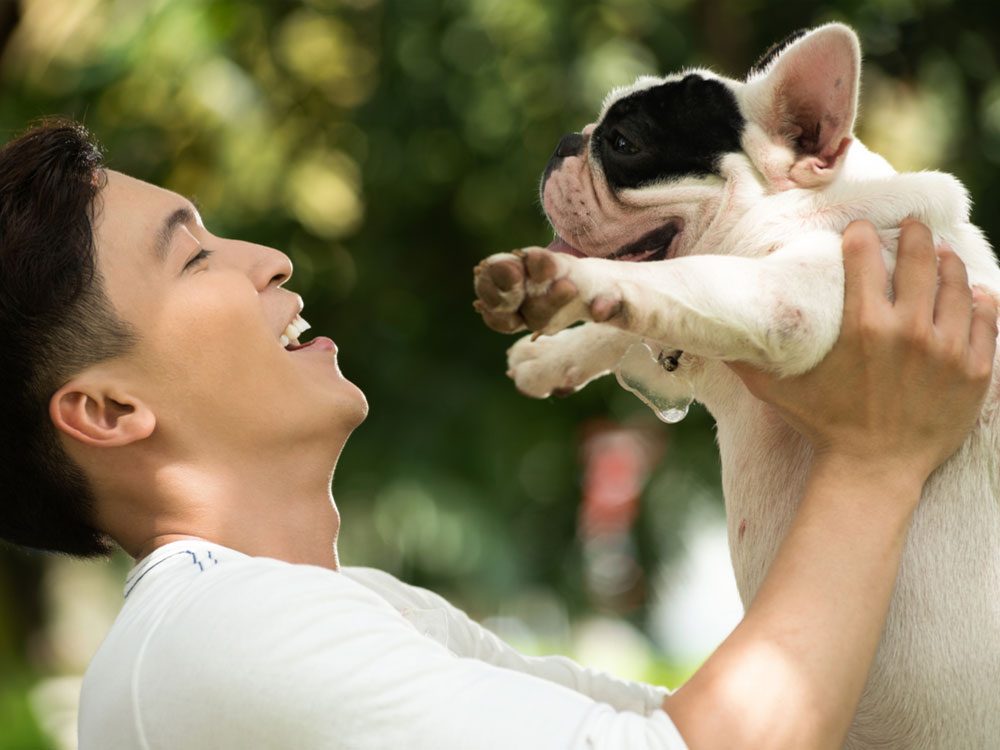
Your Dog Loves When You Smile, Study Says
Life can never be too “ruff” with man’s (or woman’s!) best friend around. Aside from their sweet cuddles and slobbery kisses, research has shown that your pooch can improve your sleep quality and even help you live longer. So if you catch yourself grinning from ear to ear thanks to all the benefits you get from your pup, rest assured that Fido is feeling the love, too—literally! (Here’s the real reason your dog freaks out during a thunderstorm.)
Studies show that smiling at your dog can boost his or her levels of oxytocin, also called “the love hormone” for its role in building attachment and trust. (Don’t miss these sure signs your dog trusts you.) On top of that, new research suggests that seeing a human smile might even cause dogs to ignore their natural instincts in favour of our puppy love—pun intended.
In the study, which was published in the journal Frontiers in Psychology, scientists at the University of Helsinki’s Canine Mind project showed photos of smiling or frowning human faces to 43 dogs. They did so two times: Once after receiving a dose of oxytocin, and once when they did not receive anything. During each experiment, the team used an eye tracking device to measure the test dogs’ gazes and pupil sizes, allowing the researchers to gauge their subjects’ emotional responses and levels of attentiveness. (Discover why dogs stick their head out of car windows.)
While dogs are usually hard-wired to concentrate on threatening or dangerous stimulants, those under the influence of oxytocin were more likely to cast aside that survival instinct in the study. They tended to gravitate towards smiling human faces, instead, and their pupils became more dilated when they looked at the angry faces.
“Both effects promote dog-human communication and the development of affectionate relations,” lead author and Finnish professor Outi Vainio told Science Daily. In other words, give your pup a smile when you get home tonight. Trust us, it will seriously make their day.
Check out these six things to know before owning a puppy!

The late, great Princess Diana of Wales was a loving mother, a devoted philanthropist, a style icon… and a cosmetic connoisseur?
It’s true, according to Lush Cosmetics. In fact, the natural beauty brand just revealed that the princess was such a huge fan of their products that one was made specifically for her. (Learn even more fascinating facts about Princess Diana.)
Lush says that back in the day, co-founder Mark Constantine met with the Princess of Wales to learn about her skincare routine. Out of that meeting (and a bit of royal expertise!), the formula for Lush Gorgeous Moisturizer emerged. And it’s still a fan favourite today—despite its lofty price tag. Don’t get us wrong, though; this skincare splurge is worth every buck. (This is the real reason Diana got her iconic short haircut in the 1990s.)
What makes this moisturizer fit for royalty? For starters, it contains cold-pressed organic evening primrose oil to leave your complexion as soft as Lady Di’s. It also mixes a carefully concocted infusion of organic orange blossom honey and extra virgin olive oil. Thanks to its airy texture, Gorgeous Moisturizer is light enough to act as a canvas for your day’s makeup. Apply it at night after you cleanse and tone your face, and it’s guaranteed to make your skin glow. Talk about beauty sleep!
Even if you struggle to mimic Duchess Kate’s luscious locks, you can still rock a royal look thanks to the skincare genius of the People’s Princess.
Steal these fashion tips from Princess Diana next!
[Source: InStyle]

With the number of people with Alzheimer’s disease growing fast, it’s never too late (nor too early!) to assess your risk. One of the best places to start? Your own plate. But before you stock up on the best foods for your brain, there’s one surprising item you might want to avoid—and it’s probably in your kitchen right now. Canola oil could increase your risk of developing Alzheimer’s disease, according to a new study published in the journal Scientific Reports.
To study the cognitive effects of this vegetable-based fat, researchers at Temple University split lab mice into two groups: While the first group ate a normal diet for six months, the others had about two tablespoons of canola oil added to their diets each day. Then, the mice ran a maze to test their cognitive skills. (There could be a new drug-free treatment for Alzheimer’s soon.)
Based on the mice’s performance, the researchers reported a sharp reduction in the memories of the canola-eating mice compared to the first group. The canola oil group also gained more weight than their counterparts.
But the mice’s weight gain didn’t cause their bad recall skills. Turns out, canola oil consumption also lowered levels of a dementia-fighting protein called amyloid beta 1-40 in the mice’s brains, according to researchers. This protein deficiency allowed amyloid plaque to surround their brains’ neurons, which decreased and damaged the neural connections. The mice’s memories suffered, as a result. (Feed your brain with the MIND diet, which can reduce your risk of Alzheimer’s.)
In light of this, you might want to ban canola oil from your pantry. “Even though canola oil is a vegetable oil, we need to be careful before we say that it is healthy,” said Domenico Praticò, MD, a senior investigator on the study. “Based on the evidence from this study, canola oil should not be thought of as being equivalent to oils with proven health benefits.”
Granted, this study used mice instead of humans as subjects, so the jury’s still out on the true effect of canola oil on human brains. But it can’t hurt to swap canola with olive oil, in the meantime. Nutritionists tout—and scientific research confirms—the benefits of this heart and brain-healthy superfood. Trust us, your noggin will thank you.
Here are 6 Foods to Help Prevent Alzheimer’s Disease.
[Source: EurekAlert]

The rogue knight doubted that the asthmatic knave in knickers could climb the castle columns, but when their wrangle wrought chaos on the couple, the knight resigned with the knowledge that their tight-knit friendship wouldn’t succumb to dumb disputes.
Now if you were to pronounce every single letter you saw in that ridiculous sentence, it would sound a lot different than what you just read in your mind.
The English language is notorious for its use of silent letters, which is one of the reasons these are the hardest English words to pronounce. In fact, about 60 per cent of English words contain a silent letter. But these often distressing words weren’t intended to be so confusing.
In many cases, these silent letters actually were pronounced, like when “knight” sounded like “kniht” or “bite” sounded like “beetuh.” In the Middle Ages, the English language was rocked by the Great Vowel Shift, a major phonetic change that affected how long vowels were spoken. These changes took place over the course of several centuries and eventually led to modern English pronunciations with little or no changes in spelling.
Some of these changes are marked by the notorious silent “e,” which makes “rid” an entirely different word than “ride.” This usage makes “e” a diacritic letter, one that is unpronounced but changes the pronunciation of another syllable. (Here’s why IKEA products have such weird names.)
Other words with silent letters are borrowed from other languages. For instance, “tsunami” is actually a Japanese word, and “psychology” comes from the Greek words “psyche” (meaning spirit or soul) and “logica” (meaning the study of something). However, the consonant combinations “ts” and “ps” aren’t used to start words in English, so the first letters became silent so it would meet the language’s phonological rules. (These 19 words are spelled the same forwards and backwards.)
But there is one more factor that resulted in these silent letters: ego. Some people with influence over how the English language would evolve added extra letters simply because they could. Many printers who operated printing presses in England came from the Netherlands and Germany. Because they had control over a language that was, at the time, still not standardized, they added extra letters to have them resemble words from their home countries. In a similar way, scholars added the silent “b” to “doubt” to educate the (what they assumed was) oblivious public on the word’s derivation from the Latin “dubitare.” In reality, all they did was turn “dout” into “doubt” when no one asked for an unnecessary consonant.
While silent letters may seem useless at times, it’s almost impossible to ignore them because they play such a prominent role in the English language. Luckily, we found some grammatical loopholes that can make your life easier.
Check out the 17 Words Even Smart People Mispronounce!
[Sources: The Independent, Mental Floss]